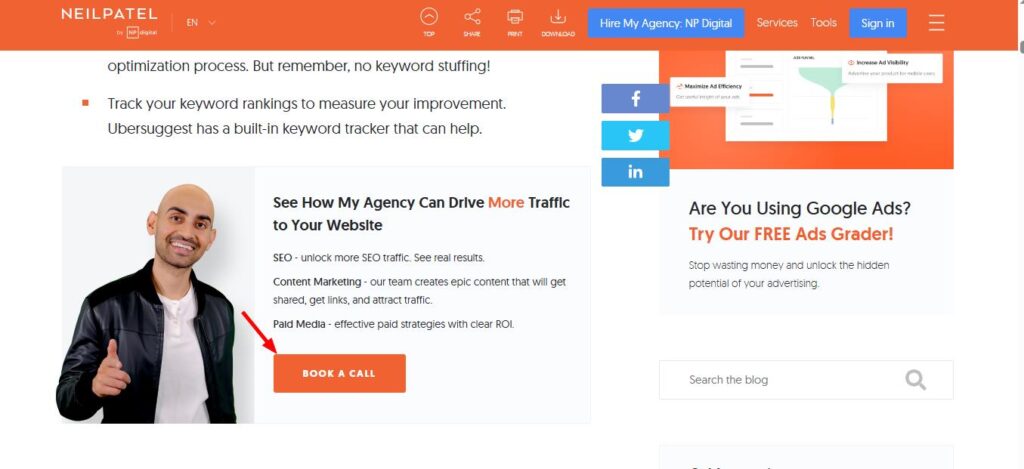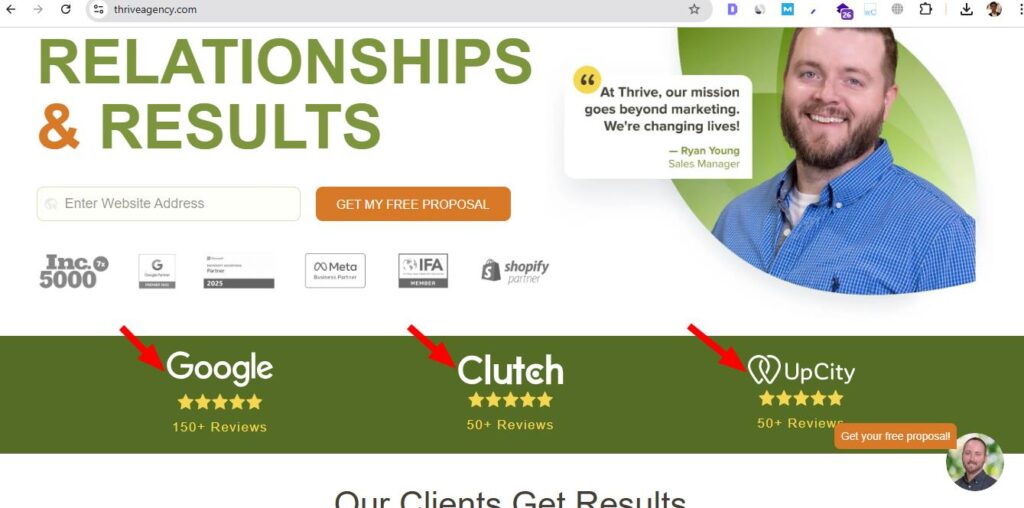Creating a portfolio website is easy, but making the most of it is not! I’ve seen many people create a portfolio website and upload their work, but no one can easily find it just by browsing the internet.
And what’s the point of having a portfolio website if it doesn’t get any attention? It’s like owning a Lamborghini that stays parked in a garage its entire life—no one even notices it.
If you want to get the most out of your portfolio website, you need SEO (Search Engine Optimization) or paid advertising. But SEO is free, more reliable, and SEO helps you build a brand. Less than 1% of users click on the second page of Google results.
In this post, I’ll share the best practices and tips to help your portfolio website rank on the first page of Google.
The Ultimate Strategy On How To Have An Effective SEO For A Portfolio Website
I’m not just talking about a basic SEO checklist that applies to every website. This checklist is specifically for portfolio websites, whether for an individual or a company.
Go through your portfolio website using the steps in this post. After applying them, your website won’t feel like just a CV anymore. You will start getting traffic and conversions from it.
1. Niche Specific
You need to focus on a specific niche, whether you’re a web developer, graphic designer, or SEO expert. If you’re an SEO expert, you can’t cover everything at once, like On-Page SEO, Off-Page SEO, Copywriting, Technical SEO, Content Writing, and Blogging.
I highly recommend not going too broad or discussing topics you have no experience in. In SEO, there’s a concept called E-A-T. Google only trusts people who are experienced and reliable, which affects how it ranks content.
2. Competitor analysis
The second step is to analyze competitors, starting with their website designs and types of web pages. Check how they showcase their portfolio, what widgets they use, how many sections their landing pages have, and what those sections include.
Look at what they cover in their posts and how they make money. Create a document to note everything down, or you’ll forget. Follow these points in your SEO strategy for your portfolio website.
3. Simple Fast Load Design
Keep your website design simple and avoid unnecessary widgets or transitions that can slow it down. Make the navigation bar easy to use, and optimize your site for mobile since most users browse on their phones rather than desktops or tablets.
4. On Page SEO
When creating web pages, I suggest starting with keyword research and building your pages around those keywords.

For example, if you are an SEO expert, you can create pages on Top SEO Specialist, Best SEO Expert, Top 5 SEO Experts, Guest Post Services, Link Building Services, and more.
This way, you can focus on high-search-volume keywords and use them to structure your landing page sections.
I won’t cover keyword research in this post since I’ve already written about it. You can check it out here:
Read More >> How to Find Keywords for SEO
After that, optimizing metadata, H1, H2, and H3 headings, URLs, and images will help improve your rankings in search results.
5. Create High-Quality Content and CTA
When it comes to blogging, you should write about topics you already know well.
For example, if you’re an SEO expert like me, focus on topics such as:
- On-Page SEO
- Off-Page SEO
- Technical SEO
- Content Writing
- Copywriting
- Keyword Research
- Blogging
Create these categories and start producing high-quality, useful content. Don’t just rely on AI-generated content. Also, don’t cover all categories at once. Instead, go step by step.
For instance, if you’re writing about On-Page SEO, create around 100 posts on the topic before moving on to the next category. This approach helps Google recognize your website as niche-specific and authoritative in your field.
When you have enough content and start ranking for it, I suggest running a campaign on the blog posts that perform well in search results. Create a widget or section for a CTA (call to action).
For example, if you are an SEO expert, add a widget within your blog post content to sell your services, just like Neil Patel does in his blog posts.

6. Portfolio and Case Studies
If your portfolio website doesn’t have a dedicated portfolio or case study page, it’s a big mistake—no matter your profession.
You need a portfolio page because it indirectly affects SEO. How? Google strictly follows the trust factor in SEO.
When you showcase the projects you’ve worked on, the niches you’ve covered, and the countries you’ve worked for, it builds credibility. Adding screenshots and stats improves trust, not just for Google but for real users too.
7. Include a Bio
Including a bio not only helps users trust you or your company, but it also helps Google recognize you as an authority.
All you need to do is create a strong “About Us” page by adding your current information along with some past highlights. Make sure to include all your social media links so people can find you on other platforms.
Next, create an author bio in the sidebar of your blog page and at the bottom of each post. Share your social accounts and add a clear, high-quality profile picture.

8. Create Service Pages
Keyword research helps you create web pages that match your profession. If you’re an SEO expert, you should have service pages like “SEO Services,” “Google My Business Profile Audit,” and “Content Writing.” These pages not only highlight your skills but also open up opportunities to make money by sharing your experience and knowledge.
9. Leverage Client Testimonials Aand Reviews
Mentioning testimonials or reviews on your website is like getting quality backlinks, but not actual backlinks.
When you include client testimonials and reviews from Google, TrustPilot, Glassdoor, Clutch, Yelp, GoodFirms, and more, you send a signal to Google that you are trustworthy and experienced in your profession and niche. This can ultimately help you rank better in search results.

10. Build Backlinks And Promote Your Portfolio Website
When it comes to creating backlinks, I see many SEO experts still making free backlinks, thinking it will work—but it really doesn’t.
I wrote a complete blog post on which backlinks are bad and which ones are the best, even though backlinks still matter.
Read more >> Is link building dead?
Let me give an example. Suppose you have a service page for web design. You did great on-page and technical SEO, and your competitor put in the exact same SEO efforts.
Based on this, the match should be a tie, right? Neither of you should outrank the other because you both followed the same SEO tactics.
But Google doesn’t rank two websites in the same spot. Now, let’s say your competitor creates one quality backlink for their page. Google will prioritize their page over yours.
So, the conclusion is that making backlinks is good—but not all backlinks help. You should focus on profile backlinks, business listings, image submissions, and buying backlinks from web pages that actually have traffic. It doesn’t matter if the traffic is 1, 2, or 300, as long as it’s real.
11. Engage in local SEO strategies
If your company is based in a specific location, you should create a Google My Business profile because Google prioritizes local websites in their area.
12. Create Gallery Page
You will understand this better with an example. If you search “Brian Dean” on Google and go to the images section, you will only see pictures of Brian Dean, the SEO expert—not Brian Dean, the graphic designer from Mexico.

Why? Because Brian Dean didn’t just optimize his presence on web pages; he also worked on image search.
How did he do it? Simple. He uploaded more images on his website, got backlinks from other websites, and made sure his images appeared there too.
The key is to post as many images as possible so no one else can compete with you.
Additional Golden Key Points for Adding a Trust Factor
These points won’t directly help with SEO, but they will build trust, which is the most important factor. They can also help you create more income sources.
- Podcast: It’s not a quick game. Getting industry leaders on your podcast isn’t easy. You’ll need to wait until you and your company gain some recognition in search results. Once your website starts getting traffic, start reaching out to leaders in your industry for podcast interviews. This will help people understand you better and eventually increase your leads and conversions.
- Courses: After getting some traffic, you can create a proper course based on your skills and launch it. This will give you another way to earn money.
Final Thought – Wahaj Ansari
I hope you found this post interesting and informative. Follow these steps to rank better in search results with your portfolio website. Set realistic timeframes because SEO is not a quick scheme—it takes time but provides long-term results. And don’t forget, SEO is an ongoing process. Keep updating your portfolio website by searching for new tips and tricks on the internet.
Discover more from Wahaj Ansari
Subscribe to get the latest posts sent to your email.


http://Julie%20Waston
I have been working on my portfolio website for the last 3 months. Now, after reading this, I need to revamp my SEO strategy. Thank you, Wahaj!
http://Jack%20Evans
Leveraging Reviews is really helpful. I didn’t know reviews could help with SEO too.
Yeah, it helps you build EAT Factor.
http://Escorts%20Leicester
If I place my keyword in the title, URL, and headings, but my content is boring and robotic, will Google still rank me?
Ah, you’ve hit the nail on the head! Sure, AI-generated content might seem like a quick hack, but if you’re playing the long game, it’s not a smart move. Google is all about delivering content that genuinely helps users, and when the core updates roll around, it’s likely to catch up with pages that are just stuffing in keywords without real value. So, the short answer? Nope, it won’t rank in the long run.
http://Micheal%20Hox
If showing off past work builds trust, is it smarter to highlight five top-quality projects or twenty decent ones, and how would Google even know the difference?
Haha. It is an interesting question. Google doesn’t actually know which of your projects are top-notch and which ones are just okay—unless you’ve worked with some big names that Google already recognizes. But if all your projects are from clients that Google doesn’t really know, then it’s smarter to show all 20. And yes, include your top 5 in there too.
Why? Because the number of projects gives Google’s crawlers more to chew on, and the top-quality ones are what impress real people. So you’re basically feeding both sides. Hope that clears things up.
http://rayford%20lions
Hello! I understand this is somewhat off-topic but I needed to ask.
Does managing a well-established website such as yours
take a massive amount work? I’m completely new to blogging but I do
write in my journal every day. I’d like to start a
blog so I can easily share my own experience and views online.
Please let me know if you have any ideas or tips for new aspiring bloggers.
Appreciate it!
Haha, thanks! My website’s still a work in progress—because let’s be real, content creation never ends, and SEO is like that one friend who never stops talking.
The trick is to stick with one micro niche you already know better than others. No need to chase everything at once. Pick something you’re confident about and go all in.
On weekends, just find 3 main keywords along with their supporting ones. That’s your prep work. Then during the weekdays, write posts around them. Three posts a week is a solid way to get started without burning out.
http://chong%20peel
Asking questions are truly pleasant thing if you are not understanding something entirely, but this piece of writing
provides pleasant understanding yet.
Thank you for your kind words.